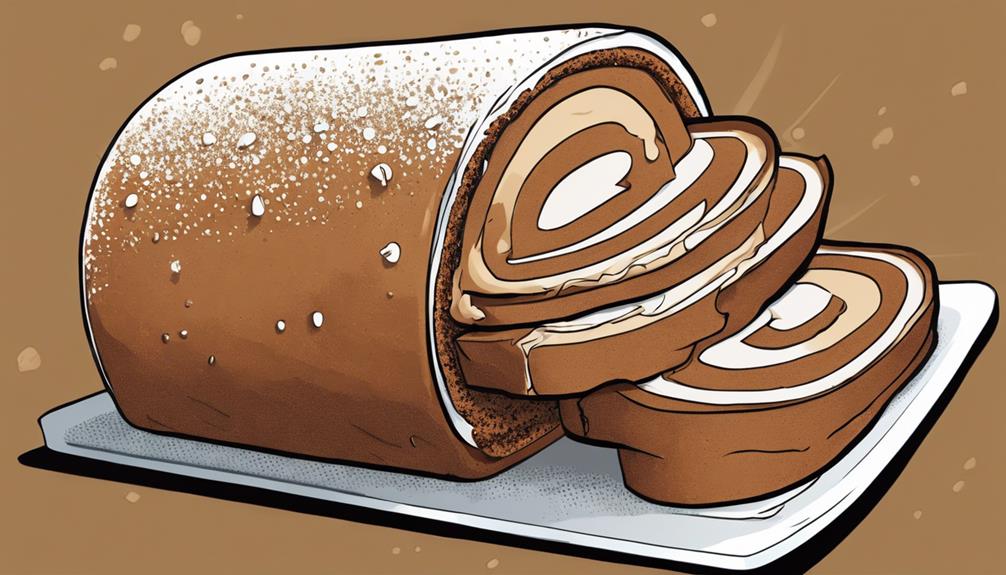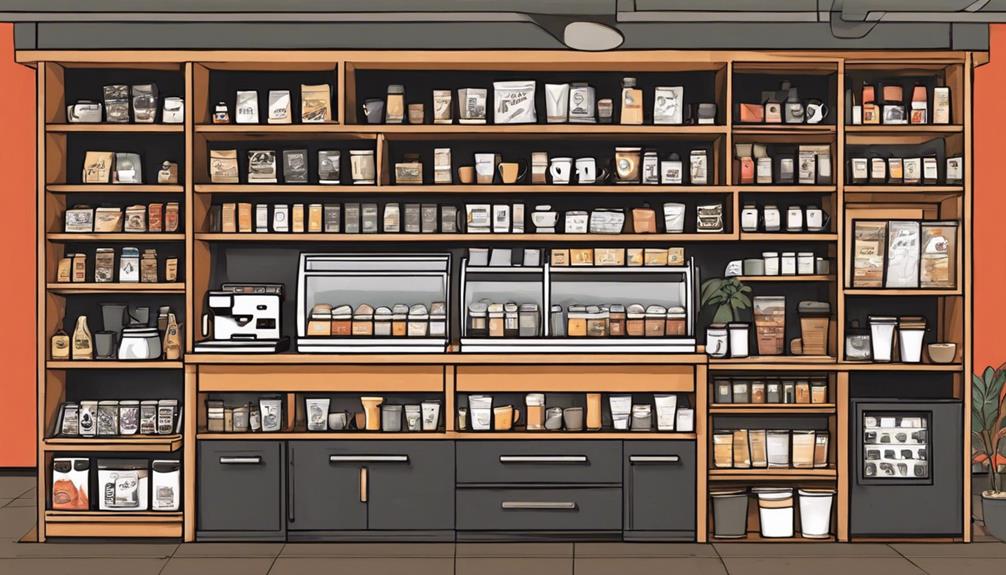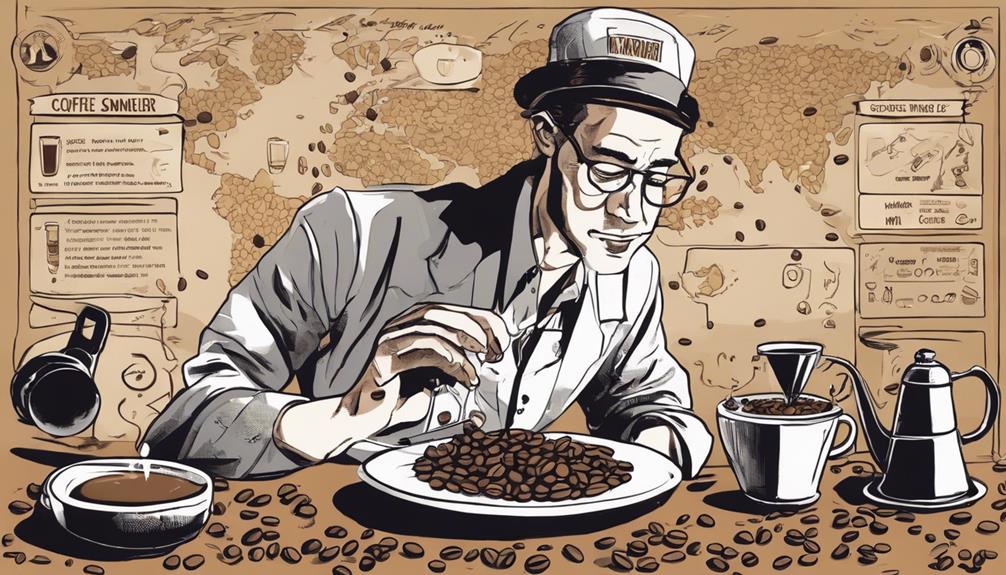To import coffee into the United States of America, you can confidently pack roasted beans, but avoid whole berries and seeds. It is important to follow the regulations, especially when shipping to Hawaii and Puerto Rico. Keep in mind that certain types of coffee are subject to restrictions in order to protect their species. Consider utilizing air or sea freight options for transportation. Ensure that your supplier meets quality standards and has FDA approval. Stay informed about import laws, provide accurate declarations, and obtain necessary certifications. Strategically market your product by identifying current trends. Package your coffee product intelligently to prepare for customs. Maintain transparency and comply with regulations for a smooth transition. If you need more advice, continue to explore different resources!
Key Takeaways
- Roasted coffee beans have no restrictions for entry.
- Avoid bringing whole coffee berries.
- Check regulations for coffee seeds for planting.
- Declare coffee accurately to customs.
- Invest in suitable packaging to preserve quality.
Regulations for Bringing Coffee
When bringing coffee to the USA, it's important to be aware of the regulations in place. While roasted coffee beans can be brought into the country without restriction, green coffee beans have specific limitations.
Generally, green coffee beans can be brought into the USA, except for Hawaii and Puerto Rico where restrictions apply. It's important to note that whole coffee berries are prohibited due to the risk of fruit flies.
If you're planning to bring coffee seeds for planting purposes, be sure to check the specific restrictions in place to ensure compliance with regulations. Additionally, some coffee varieties are considered protected species, leading to entry limitations.
Hence, when considering bringing coffee to the USA, it's essential to understand the rules regarding green coffee beans, whole coffee berries, coffee seeds for planting, and protected coffee species to avoid any issues upon entry.
Coffee Entry Restrictions and Guidelines
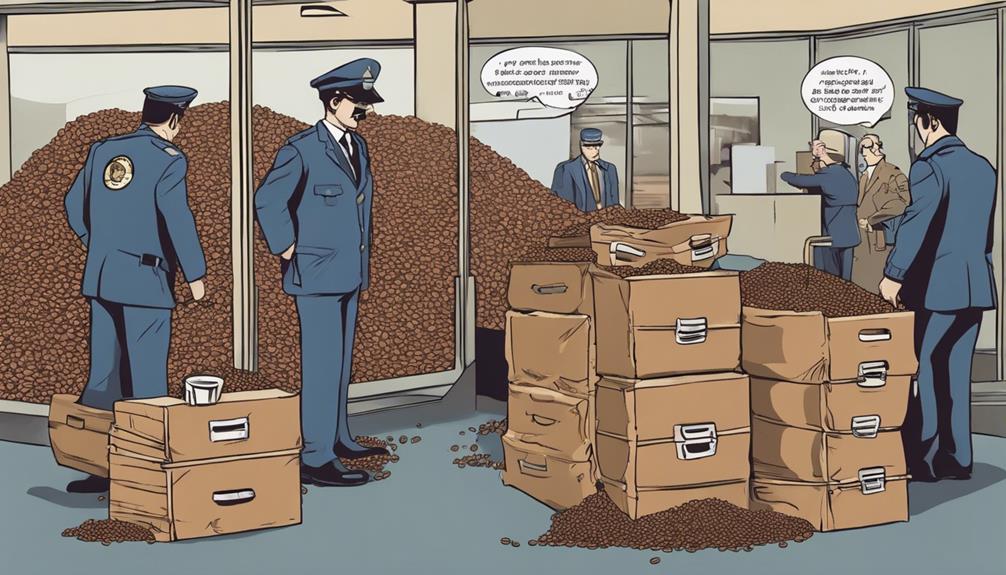
To ensure smooth entry when bringing coffee to the USA, it's important to understand the specific restrictions and guidelines regarding various forms of coffee products. For example, green coffee beans may be subject to agricultural restrictions, certain types of gourmet flavored coffee may be considered food products, and instant coffee may be subject to limitations on personal quantities. Additionally, if you plan on asking for coffee in Italian while in the USA, it’s important to be aware that certain types of coffee may be subject to additional regulations and import duties. Being knowledgeable about these requirements will help avoid any potential delays or issues when bringing coffee into the country.
Roasted coffee beans are generally allowed without restrictions. However, green coffee beans face limitations, as they're prohibited from entering Hawaii and Puerto Rico due to agricultural concerns.
Additionally, coffee berries, especially whole ones, aren't permitted to prevent the spread of fruit flies.
When it comes to coffee seeds intended for planting, there are specific regulations in place to protect against pests and diseases. It's essential to note that certain coffee varieties are considered protected species, leading to entry limitations and restrictions.
Shipping Logistics for Coffee Imports

Understand the necessary shipping logistics involved in importing coffee into the USA to guarantee a smooth and efficient process. When shipping coffee into the United States for your coffee shop, it is important to take into account the regulations set by the Food and Drug Administration (FDA) to ensure compliance and avoid any delays or issues. Here is a breakdown of the main ways to import coffee and factors to keep in mind:
| Shipping Method | Description | Points to Note |
|---|---|---|
| Courrier Model | Fast and efficient method, ideal for smaller shipments. | Confirm proper documentation and compliance with FDA regulations. |
| Air Freight | Quick delivery option suitable for time-sensitive shipments. | Be ready for higher costs compared to sea freight options. |
| LCL Sea Freight | Cost-effective for smaller coffee shipments. | Plan for longer transit times and potentially more handling of goods. |
| FCL Sea Freight | Best for large coffee shipments, offering cost savings for bulk orders. | Coordinate with shipping companies experienced in food and beverage transportation for reliable delivery. |
Supplier Selection and Quality Control
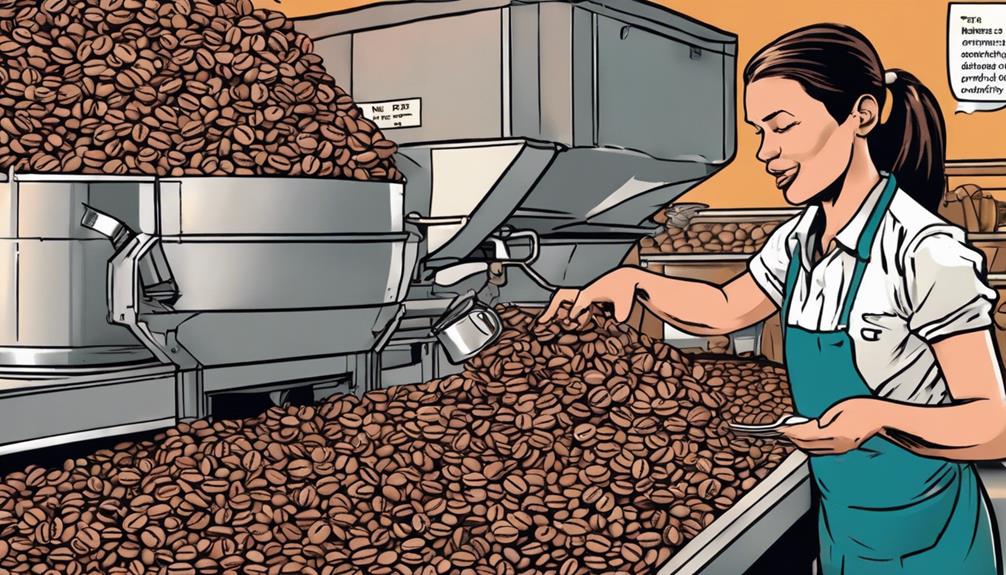
Consider the experience, green coffee varieties, and minimum order requirements when selecting a coffee supplier for your import needs. It's essential to choose a supplier with a strong track record in the industry, offering a diverse range of green coffee varieties to meet your preferences. Additionally, make sure that the supplier can accommodate your order size without compromising on quality.
Quality control plays a significant role in maintaining the freshness and flavor of the coffee during importation. Prioritize suppliers that have strict quality control measures in place to guarantee the excellence of the product. Investing in suitable packaging, such as GrainPro bags for roasted coffee beans, can further help in preserving the quality of the coffee throughout the shipping process.
Compliance and Legal Considerations
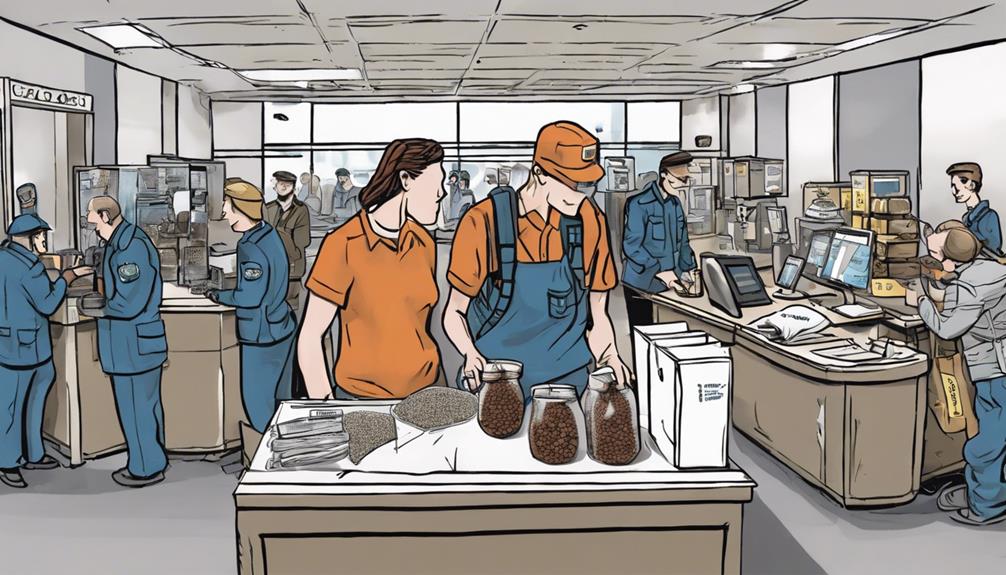
Staying informed about changing import regulations and trade agreements is important for guaranteeing compliance with legal requirements when bringing coffee to the USA.
When importing food items like coffee, you must declare them to customs officials accurately. To meet consumer preferences and guarantee compliance, obtaining certifications such as Fair Trade or Organic can be advantageous.
It's vital to maintain detailed records of transactions, invoices, and shipping documents for regulatory purposes. Consulting legal experts or trade advisors can provide valuable guidance on complex regulations related to coffee imports.
Familiarizing yourself with FDA and USDA regulations for food and beverage imports is crucial to avoid compliance issues. By adhering to these legal considerations, you can navigate the import process smoothly and minimize the risk of facing penalties or delays when bringing coffee to the USA.
Marketing Strategies for Coffee Import

To effectively market imported coffee in the USA, begin by conducting thorough market research to identify consumer preferences and trends in the coffee industry. Understanding the market will help you tailor your marketing strategies to resonate with the target audience.
Targeting specific regions or demographics that appreciate specialty coffee can enhance the effectiveness of your marketing efforts. By focusing on these niche markets, you can create a more personalized approach that speaks directly to the preferences of coffee enthusiasts.
Collaborating with local distributors or retailers is another essential strategy to contemplate when importing coffee. By partnering with established businesses in the industry, you can leverage their existing networks and customer base to expand the reach of your imported coffee products.
Additionally, utilizing online platforms for direct-to-consumer sales can help you reach a broader audience and increase accessibility to your specialty coffee offerings. Developing unique marketing strategies that highlight the quality and uniqueness of your imported coffee brands will set you apart in the competitive market.
Dealing With Customs and Food Items
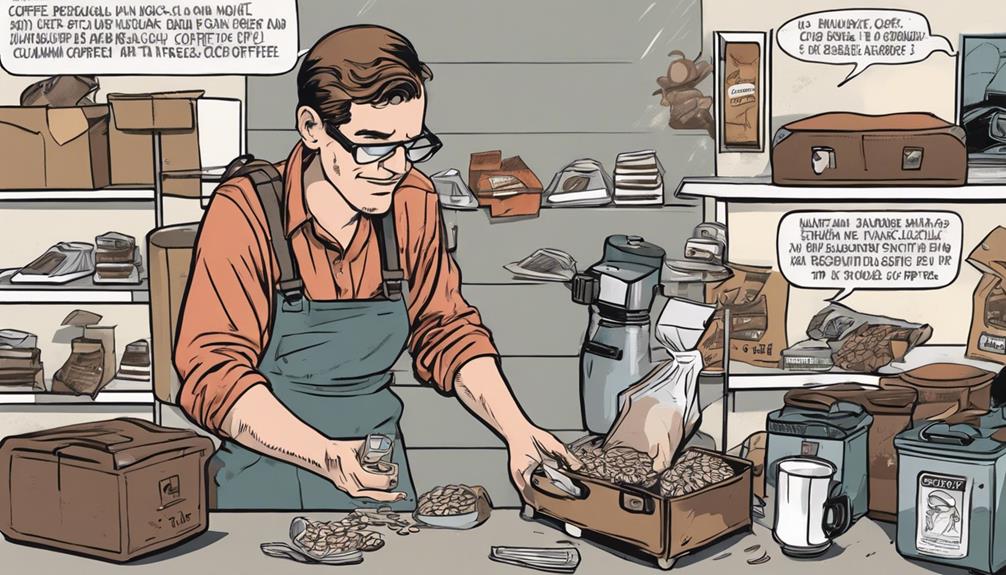
How can you guarantee a smooth process when dealing with customs regulations for bringing coffee or tea into the USA?
When traveling with food items like coffee, it's essential to be aware of Border Protection regulations. Vacuum sealed containers are generally allowed, but strong-smelling foods, such as coffee, may attract closer scrutiny.
To ease the process, consider labeling packages in pounds instead of kilos for better communication with officials. The intense aroma of coffee can overpower other scents in your luggage, potentially leading to further inspection.
By following these guidelines and referring to package weights in pounds, you can navigate customs more efficiently and minimize any delays or issues.
Remember that being transparent about the contents of your luggage and adhering to regulations is key when transporting food items like coffee or tea across borders.
Frequently Asked Questions
Can I Take Ground Coffee Into America?
Yes, you can take ground coffee into America. Customs may inspect it due to the strong aroma. Vacuum-sealed packages are recommended. Declare it to avoid issues. Remember to comply with quantity regulations.
Can I Bring Coffee Through Tsa?
You can bring coffee through TSA. Roasted beans are usually good to go, but ground coffee might get a closer look. Using vacuum-sealed containers can help keep things tidy.
Can You Bring Coffee Powder Into the Usa?
Yes, you can bring coffee powder into the USA. It's generally allowed, but be aware of potential scrutiny due to its strong aroma. Opt for vacuum-sealed containers and packaging labeled in pounds for smoother customs inspection.
How Is Coffee Transported to the Us?
Shipping coffee to the US involves methods like air and sea freight. Understand costs, fees, and work with experienced companies. Maintain proper storage conditions to preserve freshness. Choose a reliable supplier, focus on quality control, and comply with regulations for successful transportation.
Conclusion
So sip the succulent brew, savoring the smooth, rich flavors of your imported coffee. Remember, regulations and restrictions must be respected, but with savvy shipping, superior suppliers, and strategic marketing, you can conquer the challenges of bringing coffee to the USA.
Stay sharp, stay savvy, and soon you'll be sharing your sensational coffee with satisfied customers across the country. Cheers to your caffeinated conquest!



